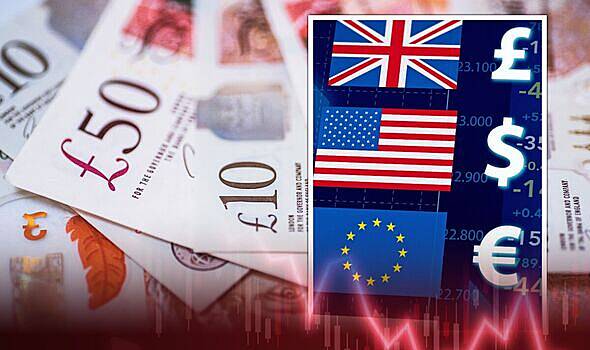The euro is poised for its longest losing streak since its launch in 1999, with a potential record-breaking 12 weeks of consecutive declines against the dominant U.S. dollar.
As of Friday, the European common currency showed a slight uptick, trading at $1.0575 after hitting a 10-month low of $1.0448 earlier in the week. Despite the minor recovery, it remains on track for a marginal weekly decline.
The persistent euro-to-dollar downturn has primarily been fueled by dollar strength, as indicated by the dollar index, tracking the greenback’s performance against six major currencies. This index is now on the cusp of achieving its own 12-week winning streak, a feat not seen since 2014.
The recent surge in the U.S. dollar’s value can be attributed to several factors, including a rapid sell-off in U.S. government bonds, resulting in multi-year high yields. This trend was instigated by asset managers shedding their overweight positions in government bonds, coupled with rising oil prices, a flood of government and corporate bond supplies, and investors acknowledging that central banks, particularly in the United States, are likely to maintain high-interest rates for an extended period due to robust economic data.
While other currencies briefly found respite when bond prices stabilized mid-week, the impending release of U.S. non-farm payrolls data at 12:30 GMT on Friday is casting a shadow of uncertainty. Francesco Pesole, FX strategist at ING, commented, “The pause in the bond sell-off is granting some room for recovery for most currencies against the dollar. Today’s US payrolls are, however, the big event of the week, and a strong read could easily put markets back on a bearish track and reignite aggressive dollar buying.”
Despite the euro’s ongoing struggles, the British pound, which hit a six-month low earlier in the week before bouncing back, managed to post a 0.16% gain, reaching $1.2211.
On the other hand, the Japanese yen continued to face pressure, with the dollar advancing by 0.36% against the yen, reaching 149.04. Speculation arose earlier in the week when the dollar-yen pair saw a sharp drop to 147.30 on Tuesday, leading some to speculate about potential currency market intervention by Japanese authorities. However, data from the Bank of Japan (BOJ) suggested otherwise, leaving the question of intervention open-ended.
Vishnu Varathan, head of economics and strategy at Mizuho Bank, commented, “Whether the BOJ and/or (Ministry of Finance) will intervene at distinct levels… will continue to be a tease, contingent on broader currency markets and momentum.”
In other developments, the Swiss franc remained steady at 0.9119 per dollar, while the Australian dollar slipped by 0.2% to $0.6359, facing a weekly decline of 1.2%.




















